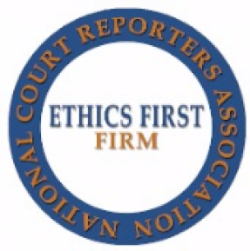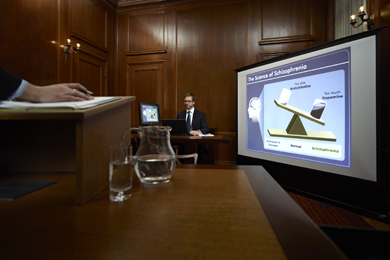Trial Presentation Recognized Experts in Courtroom Tools and Graphics
Trial Presentation Recognized Experts in Courtroom Tools and Graphics
Blog Article
Elevate Your Lawful Video Game: Proven Methods for Impactful Trial Presentations
In the affordable sector of test legislation, the ability to offer an engaging instance can significantly influence results. By comprehending the intricacies of your target market and using tactical techniques, you have the prospective to change your courtroom strategy. From crafting a story that resonates on an individual degree to leveraging aesthetic help that clear up complex debates, each aspect plays a crucial function in appealing jurors. The nuances of body language and the value of strenuous practice can not be overlooked. What methods will you carry out to guarantee your following trial presentation leaves a long lasting influence?
Understanding Your Audience

Comprehending your audience is crucial for providing an efficient trial presentation. An extensive understanding of jurors' demographics, backgrounds, and perspectives can considerably influence just how your arguments are received. Customizing your discussion to resonate with their experiences and point of views fosters engagement and comprehension, thus enhancing the influential influence of your case.
Begin by assessing potential predispositions that may impact jurors' perceptions. In addition, think about the emotional elements of decision-making; jurors are often influenced by emotions, social characteristics, and team behavior.
In addition, effective interaction is vital. Use clear language and relatable instances to elucidate intricate legal principles. Involving visuals, when appropriate, can also assist in retention and understanding. Eventually, understanding your target market enables you to craft a presentation that not only informs yet also convinces, thereby enhancing the likelihood of a favorable decision.
Crafting a Compelling Narrative
Crafting an engaging story is vital for mesmerizing a jury's interest and effectively sharing the significance of your situation. A well-structured narrative weaves together facts, feelings, and themes that resonate with jurors on both intellectual and emotional levels. Start by recognizing the core message you wish to connect, and make sure that every component of your presentation sustains this central theme.
Utilize storytelling strategies to humanize your client and the scenarios bordering the situation. Present relatable characters, develop stress, and provide a clear problem that requires resolution. This approach not only involves jurors however likewise facilitates their understanding of complicated lawful issues by framing them within a relatable context.
Use easy language and avoid legal lingo that may alienate jurors. By understanding the art of narrative, you can dramatically improve the persuasiveness of your trial presentation.
Using Visual Aids Successfully
Aesthetic aids act as effective tools in trial discussions, enhancing the jurors' comprehension and retention of critical information. Reliable visual help can streamline intricate information, show partnerships, and stress bottom lines, making them very useful in lawful contexts.
When picking aesthetic aids, consider the quality and relevance of each item. Charts, graphs, and infographics can boil down considerable information right into digestible layouts, permitting jurors to comprehend vital facts swiftly. Pictures and videos can evoke emotional reactions, creating a much more extensive connection to the instance narrative.
It is critical to guarantee that visual help are expertly created and conveniently understandable. Stay clear of cluttered slides or overly detailed graphics that may puzzle as opposed to make clear. A consistent style, including font selection and color design, can the original source improve the total influence and expertise of the presentation.
Integrating aesthetic aids requires critical timing; introduce them at turning points to strengthen your arguments. Additionally, technique transitioning in between verbal descriptions and visual content flawlessly to preserve interaction. Eventually, when made use of effectively, aesthetic help can significantly bolster your test presentation, making your disagreements much more persuasive and unforgettable to jurors.

Understanding Body Language
Efficient body movement can dramatically affect the outcome of a trial presentation. Jurors and courts are commonly subconsciously affected by non-verbal signs, which can either reinforce or weaken the reputation of the audio speaker. Grasping body language entails recognizing the nuances of posture, motions, facial expressions, and eye call.
Embracing an open stance can convey self-confidence and approachability, while closed postures might suggest defensiveness or uncertainty. Gestures must be purposeful and straightened with the spoken message, offering to highlight essential points rather than distract from them. For circumstances, using hand motions to highlight an idea can improve understanding and retention.
Face expressions play an over here important role in connecting emotions and intents - trial presentation. A sincere smile or a furrowed brow can communicate compassion or problem, specifically, affecting how the target market regards the case. Additionally, keeping appropriate eye get in touch with establishes a link with jurors and demonstrates genuineness
Practicing for Perfection
Mastering body movement is simply one part of providing a powerful test discussion; rigorous technique is similarly vital for guaranteeing that every aspect of the performance lines up perfectly. Reliable technique enables lawyers to refine their debates, prepare for counterarguments, and establish actions that are both compelling and concise.
To attain perfection, trial attorneys need to participate in purposeful practice session Discover More Here sessions, preferably in front of peers or mentors who can provide useful feedback. This strategy not just improves verbal delivery however also builds confidence in handling unanticipated court characteristics. Recording session can use very useful insights into pacing, tone, and body movement, enabling lawyers to make required changes.
Furthermore, simulating court conditions-- total with time constraints and possible disruptions-- can help lawyers acclimate to the real test atmosphere. This technique guarantees that every component, from opening statements to shutting disagreements, is delivered with accuracy and authority.

Conclusion
Including proven approaches for impactful trial discussions considerably improves the efficiency of legal debates. A deep understanding of the audience, paired with a compelling narrative and reliable visual help, cultivates interaction and persuasion. In addition, mastering body movement and rigorous method add to a clear and positive distribution. By integrating these aspects, attorneys can produce remarkable court room experiences that resonate with jurors, eventually affecting their decision-making processes and enhancing situation end results.
Report this page